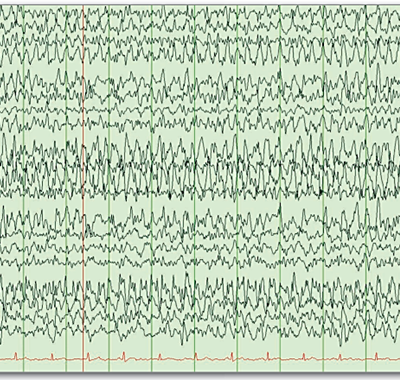
Article Topic: History of Epilepsy.
Author: Tasneem Ishaq Khallad
Editor: Noor Qasem
Keywords: Seizures, epilepsy, Babylonia, Greek, stigma, history.
Overview
Epilepsy – derived from the Greek word epilambanein meaning “to seize,” in which the body and mind are seized from the individual (1) – is a disease that could occur in all mammals, but more frequently, in species with more complex brain anatomy. (2) Scientists traced epilepsy in humans back to as far as the existence of medical records: about 3000 years ago, where Babylonian clay tablets were seen to include medical texts mentioning and classifying epilepsy. (3)
Social stigmas have always been associated with epilepsy. Patients with epileptic seizures faced discrimination ranging from lack of health insurance, jobs, marriage equality to forced sterilization (4). This is due to the misconceptions about epilepsy, in which the patients were regarded as being ‘chosen’ or ‘possessed’ by gods or demons causing them to be isolated. (5) Therefore, magical and theological treatments were prescribed, and such practices can still be seen till now. (6) Also, in antiquity, people believed for so long that epilepsy is contagious, resulting in the mistreatment of epileptic patients, spitting on them, and refusing to use the same utensils. (5) Historically, the hypotheses of epilepsy started with demonic possession, passing through many theories, until the British neurologist, John Hughlings Jackson, correctly theorized that seizure results from the excessive electrical activity of the brain. (7)
Ancient History of Epilepsy
The oldest description of a seizure was included in an Akkadian clay tablet found in Mesopotamia (see figure 1); mentioned a patient with “his neck turning left, hands and feet are tense, and his eyes wide open, and from his mouth froth is flowing without him having any consciousness.” (8) An Akkadian medical diagnostic series known as the Sakikku or “ All Diseases” – found in Mesopotamia, written around 1067-1046 BC (9), included 40 tablets arranged in 6 chapters (10) – included chapter on epilepsy. Tablet 26, the first tablet in the said chapter, described signs and symptoms, characteristics of different seizure types, treatment, and outcomes. Also, it described terms relating to epilepsy; such as miqtu (fall), hayyatu (fit), and sibtu (seizure). (10)
Babylonians had no concept of pathology. They classified the types of seizures according to the evil spirit that invaded the body during it. Therefore, the role of the physicians was to drive out the demon or appease the god; spiritual treatment not a medical one. (11) Seizures, in general, were described to start with an aura, continue to the falling, and then reach a peak of a tonic stage which then shifts to a clonic stage that was represented as the starting of the release and departure of the demon from the body. In the end, the demon will “let (the patient) go.” (3)

Figure 1: A tablet on epilepsy. Tablet BM 47753. Courtesy of the British Museum, London. Neo-Babylonian Period (ca. 626-539 BC) (10)
Epilepsy was also known during ancient Egypt. This is proved by the Edwin Smith Surgical Papyrus (medical text, named after Edwin Smith who brought it in 1862) written circa 1700 BC. (4) Egyptians were distinguished from Mesopotamians in that they believed that the underlying cause of epilepsy could be cortical disruption. This is obvious in a case documented by Egyptians describing a man with “a gaping wound in his head” and when palpated, he would “shudder exceedingly.” (8)
Chinese texts also reported epilepsy, from 770 to around 221 BC. Its description first appeared in a Chinese medicine book known as Yellow Emperor’s Classic of Internal Medicine which outlined generalized seizures. (12) The book mentioned that the underlying cause is congenital: “Epilepsy is a congenital illness. The baby contracts epilepsy inside its mother’s womb when the mother experiences an emotional shock.” (12) The treatment was by herbs, massages, and acupuncture. The first attempt to classify epileptic seizures was by Cao Yuan Fang (a Chinese physician and medical author) in 610 AD. (12)
During the Roman times, people were considered as ‘free of the falling sickness’ if they didn’t fall when given a piece of jet stone to smell, which was a common procedure when buying a slave. (13) About a millennium earlier, the Hammurabi code (a code of laws, dated 1780 BC) also stigmatized epilepsy patients by preventing them from marriage, testifying in a court, as well as considering the purchase of a slave to be void if he suffered from a seizure within the first three months of purchase. (5) Until this day, epilepsy still carries social stigmas, distressing the patient even more.
Ancient Greeks referred to epilepsy as ‘sacred’ due to its divine origin. (8) Around the 5th century BC, Hippocrates was among the earliest to suggest that the brain is the root cause of the disease. (4) He suggested that it is hereditary but not contagious and described its signs as a unilateral motor with an aura (warning sign for the patient to leave the public). (4) Hippocrates believed that it can be cured just like other diseases unless it becomes chronic, emphasized by his quote: “Moreover, it can be cured no less than other diseases so long as it has not become inveterate and too powerful for the drugs which are given. When the malady becomes chronic, it becomes incurable.” (2)
Hippocrates observed convulsions following head trauma which were contralateral to the site of the wound, leading him to be one of the first to introduce the concept of post-traumatic epilepsy. (8) He stated that the misconceptions about epilepsy are the result of the fear of the divine that the society had and believed that the disease was no more divine than others, but the ‘sacred’ name refers to its unique clinical presentations. (8) However, the non-spiritual basis for epilepsy that Hippocrates had hypothesized was not acceptable for centuries.
Aristotle (philosopher of the 4th century BC) had another concept for epilepsy. In his treatise, On Sleep and Waking, he stated that the process of epilepsy is similar to that of sleep: “sleep is similar to epilepsy and in some way, sleep is epilepsy”. (14) He believed that sleep happens when the food produces evaporations into the veins which rises upward and descends again, and so happens for epilepsy. (15) Influenced by the Hippocratic theories and the new concepts of anatomy and physiology, Galen – Greek physician, surgeon, and philosopher during the Roman Empire – described two types of seizure: primary idiopathic and sympathetic. (1) The primary idiopathic is due to the accumulation of phlegm or black bile in the cerebral ventricles blocking the psychic pneuma – the soul. (1) The other type was introduced by Galen when he observed a case of a 13-year-old boy that had a passing feeling from legs to head before the seizure, characterized later as a “cool breeze”, from which the word aura arose. (6) Thus, he considered the seizures that stem from other origins, mainly, the stomach and extremities to be sympathetic. Despite the efforts that have been made, the dark ages (early Middle Ages) experienced a regress in the theories back to antiquity. Also, with the rise of Christianity, epileptics were believed again to be either divine or demonic. (6)
Epilepsy during the Modern Era
During the Renaissance (15th-16th century), Paracelsus (1493-1541) believed in the presence of a living spirit in each creature which if suddenly and abnormally boiled up in the brain, causes epilepsy. (16) In the 17th and 18th centuries, the Hippocratic idea about epilepsy being a brain disorder, started to take root in Europe. (2) A Scottish physician called William Cullen (1710-1790) stated that seizures could occur in parts of the body and not necessarily be accompanied by loss of consciousness. (17)(18) During the same time, Maisonneuve (1745-1826), a French physician, highlighted how important is to hospitalize epileptic patients. (19) Therefore, in 1857, the first hospital for epileptic and crippled patients was founded in France. At the same time, the social distress that epileptics had, led to the foundation of care centers for them. Such institutions were also found in Norway, The Netherlands, Germany, Switzerland, England, and Denmark. (20)
Years later, Doctor Robert Bentley Todd (1809-1860) introduced an electrical theory of brain function and epilepsy (21), as he stated that an electrical discharge in the brain may be the cause of seizures. (2)(22) Todd later confirmed his theory by using the magnetoelectrical rotation machine of Michael Faraday on rabbits. (23) John Hughlings Jackson (1835-1911) put the basis for the science of epileptology and studied the localization of lesions that could produce seizures. (19)(20) His scientific findings were collected in a text he published called “Study of Convulsions”. In 1875, Richard Caton invented the first electroencephalogram (EEG) on cats, monkeys, and rabbits. (24) In 1929, Hans Berger, a German physician, recorded the first human EEG. (25) The discovery of EEG made revolutionary advancements in the fields of neurology, neurosurgery, and neuroscience, especially seizures. (25)
Once the concept of epilepsy being a brain disorder was established between the 17th and 19th centuries, its etiology was then attributed to vascular abnormalities, such as acute anemia or acute congestion in the brain. (2) During the early 1920, psychoanalysts considered epilepsy as a result of Id – Latin for “it”, is being detached from the external world and unaware of time. William Lennox (1884-1960) disagreed with this hypothesis. (26) He believed that epilepsy is due to intrinsic cerebral factors. Lennox tried to confirm the vascular etiology of epilepsy. After many unsuccessful attempts to do so, he joined Erna Leonhardt and Dr. Frederic Gibbs to explore cerebral activity recording with the nascent EEG. In 1935, Lennox concluded that epilepsy results from cerebral dysrhythmia. (26) He also frustrated the vascular effect on epilepsy and stated that there is no change in the cerebral blood flow during a seizure. (27)
In 2014, The International League Against Epilepsy (ILAE) defined epilepsy as a brain disease with any of the following conditions: (28)
- At least two unprovoked (or reflex) seizures occurring more than twenty-four hours apart;
- One unprovoked (or reflex) seizure and a probability of further seizures similar to the general recurrence risk (at least 60%) after two unprovoked seizures, occurring over the next ten years; or
- Diagnosis of the epilepsy syndrome.







